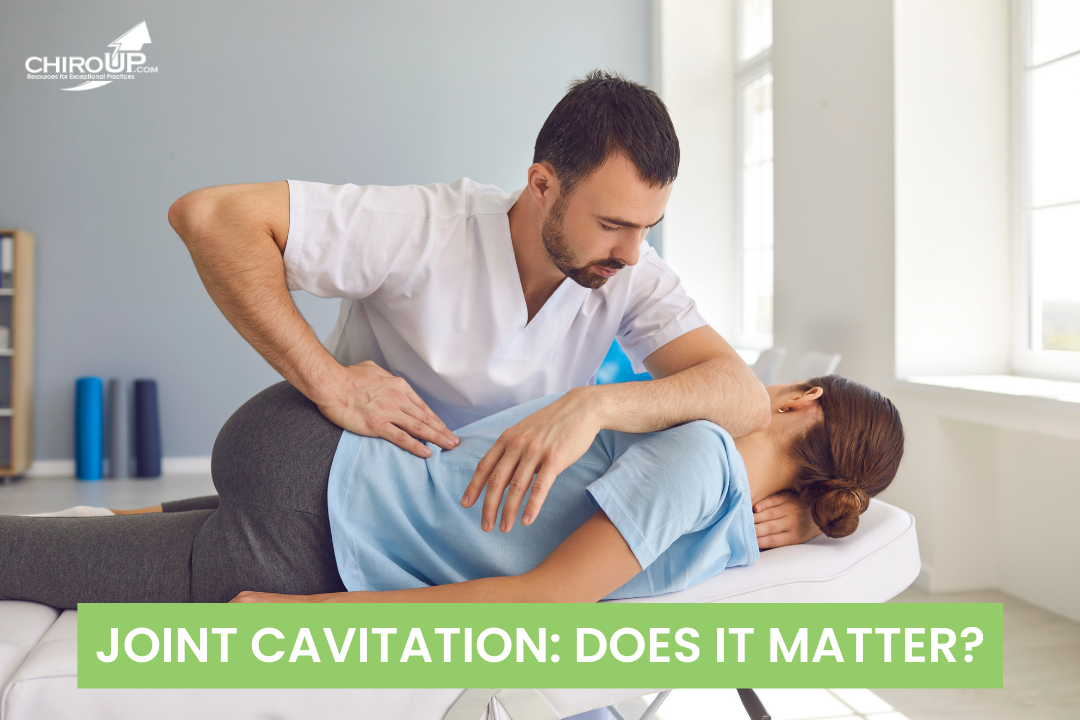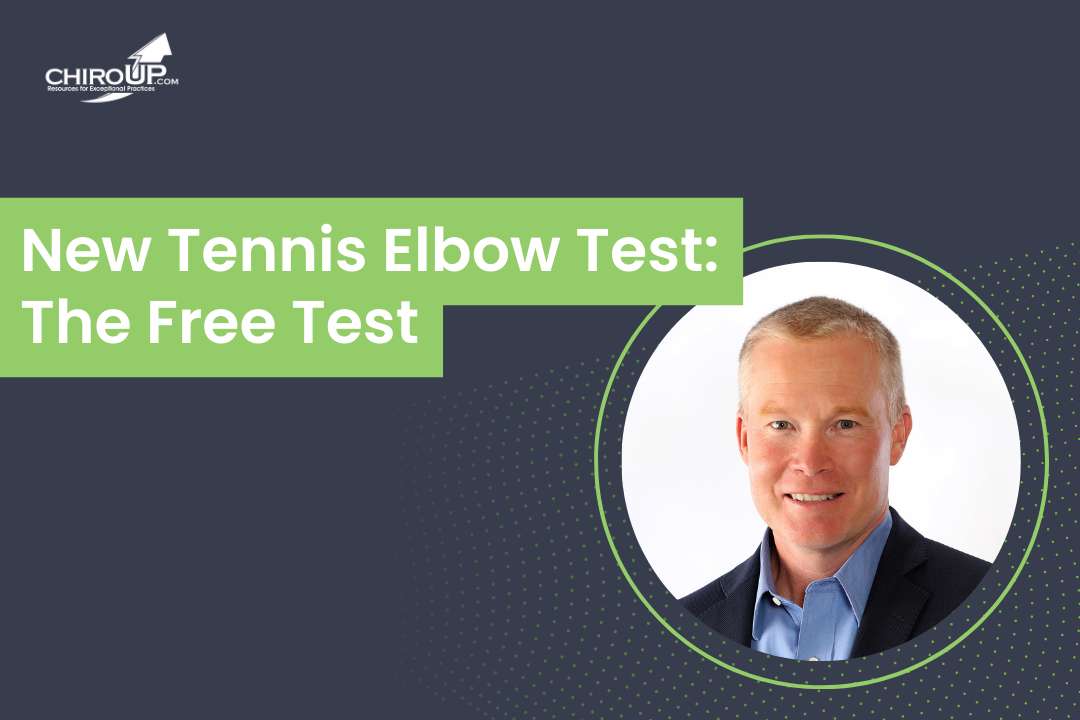Chiropractic Blog
ChiroUp’s weekly chiropractic blog contains clinical information needed to stay up-to-date on the latest chiropractic research.
Enter the following information to subscribe!
Looking for something specific? Search the blogs below.
Crowdsourced Tips to Tackle the 6 Most Frustrating Patients- Part II
Don’t miss this week’s blog for potent crowdsourced solutions to handle three frustrating patient scenarios: The Time Vacuum, The Appointment Skipper, The Grumbler. By learning some invaluable collective insights from other ChiroUp network providers, you'll alleviate frustration and foster more robust and fruitful relationships with your patients. And that's not all. As a bonus, you’ll get a video demo on how to impress new patients with your listening skills and two downloadable handouts designed to prevent the most exasperating problems you face.
Crowdsourced Tips to Manage the 6 Most Frustrating Patients - Part I
Dealing with challenging patients who hinder their own progress can be truly draining. That's why your ChiroUp team identified the most difficult patient scenarios and sought real-world advice from our subscribers. The response has been overwhelming, with over 1000 insightful suggestions pouring in! In this week’s blog, we are thrilled to share the cream of the crop: the most effective solutions curated from this collective wisdom. By mastering these invaluable insights, you'll alleviate frustration and foster stronger and more fruitful relationships with your patients. And that's not all. As a bonus, we are excited to introduce our latest downloadable handout, specially designed to prevent one of the most exasperating problems you face.
Subscapularis Syndrome
Check out this webinar on subscapularis dysfunction and its potential link to frozen shoulder. Led by Dr. Steele, the webinar will delve into the muscular dysfunction model proposed by Travell and Simons over 20 years ago, highlighting the subscapularis muscle as a potential contributor to frozen shoulder. You will learn about the primary symptom of frozen shoulder, similar to a subscapularis trigger point, and exercises to help patients with subscapularis syndrome resolve their symptoms quickly. This quick webinar will help you better diagnose and treat patients with subscapularis syndrome, providing them with the best possible care. Don't miss out on this opportunity to expand your knowledge and improve patient outcomes.
3 Facts Every DC Must Know About Inversion Therapy
This week’s blog reviews the current inversion table therapy research, including the surprising answers for Do inversion tables work, and are they safe? In less than 3 minutes, you’ll be empowered with evidence-based knowledge plus a downloadable infographic to help you relay the facts about inversion therapy.
Top Chiropractic Podcast Episodes from Mic’d Up with ChiroUp
As a chiropractor, you are committed to providing the best possible care for your patients. One of the best ways to do this is to stay up-to-date on the latest professional advancements and clinical research. That's where the ChiroUp blog and podcast come in. Our blog provides valuable insights and perspectives on various topics, from patient education to practice management. Our podcast gives you access to new information, research findings, and treatment strategies that can help you better understand the health issues your patients are facing. In this blog, we've highlighted seven of our best podcast and blog combinations that may directly impact the way you practice today. So, whether you're looking for new ways to educate your patients or learn about the latest research, we have something for you.
Top Chiropractic Research from 2023 Q1 (January-March)
Our docs scour the weekly research to find the most useful new data. Check out this week’s blog for a quick synopsis of our top ten chiropractic-related findings from the past quarter, plus the necessary assets to maximize these skills in your practice.
Chiropractic Treatment Plans
Have you ever broken a bone? If so, you know firsthand the excruciating pain and discomfort it can cause. The good news is that bones can heal themselves, but the healing process takes time. It's reasonable to expect a recovery period of 6-8 weeks for a broken bone. Understanding the expected healing time can offer reassurance to patients and medical professionals alike, as there's not a single person in the world who would expect a bone to heal in just one week. Yet, patients expect to see the chiropractor and heal in minutes. Herein lies the problem, and this blog will provide a simple solution.
5 Potent Plantar Fasciitis Treatment Tools
Successful long-term management of cumulative trauma disorders requires more than just in-office treatment. So this week’s blog and video detail five evidence-based strategies to complement your potent hands-on care. In less than 5 minutes, you'll learn new skills to become the go-to doc for heel pain.
Dorsal Scapular Neuropathy is More Common Than Expected
Do any of your patients experience discomfort in their mid to upper back and wonder what could be causing it? Various conditions can contribute to this pain, such as rib dysfunction, thoracic trigger points, thoracic posterior facet syndrome, and more. Is there a common thread among these conditions that could help you pinpoint the cause of their discomfort? In this blog, we explore the connection between these conditions and introduce a possible solution for those suffering from Dorsal Scapular Neuropathy: a common contributor to mid-back pain frustrating both you and your patients.
Joint Cavitation: Does it Matter?
HVLA providers and their patients often consider audible cavitation as confirmation of treatment success. But is cavitation necessary, and what should we do next if cavitation does not happen? Regardless of our feelings, we should all recognize that a patient’s biopsychosocial perspective regarding manipulation can dramatically impact compliance, outcomes, and chronicity. This week's blog will equip you with evidence-based answers to the top five questions, plus a downloadable patient infographic to help explain joint manipulation and manage patient expectations around the “pop.”
What Causes Hip Pain?
Great providers recognize patient-presentation patterns, allowing them to identify the proper diagnosis. Today's blog will provide the roadmap to identify the six most common conditions resulting in hip pain, including symptom location, aggravating factors, and clinical pearls to help you effectively manage these patients.
New Tennis Elbow Test: The Free Test
A promising new maneuver, called the Free Test, may be the best orthopedic assessment to identify intrasubstance tendon tears in tennis elbow patients. Check out this week’s blog for a video tutorial of the test, plus a review of three proven manipulations for resolving lateral elbow pain.
What is Joint Manipulation?
The audible pop associated with joint manipulation may not be a requirement for therapeutic benefit. However, many patients expect to hear it and consider it a sign of a successful manipulation. So, what happens when a joint doesn’t pop during manipulation? In today's blog, we're sharing 3 expert tips on how to address this topic with your patients. You'll learn the facts about joint manipulation and understand the importance of educating your patients about the “cracks and pops.”
7 Essential Cervicogenic Vertigo Facts Every DC Must Own
Recent studies have shown that up to 40% of neck pain patients also experience cervicogenic vertigo. Fortunately, cervicogenic dizziness is among the top ten most responsive complaints to chiropractic care.
Check out this week's blog to learn seven essential facts to become the go-to doctor for cervicogenic vertigo patients - including what the October 2022 Journal of Clinical Medicine considers “...the best diagnostic method for cervicogenic dizziness.”
Thoracic Outlet Syndrome: What is it?
Are you interested in learning more about a lesser-known condition called thoracic outlet syndrome? This blog delves into the symptoms, causes, and treatment options for this condition, as well as providing some clinical pearls that may help solve your persistent cases. Not only will you gain a better understanding of TOS, but you may also discover information that you can implement immediately to improve your patient care. Don't miss out on this important and informative read and associated video.
Sciatica: When Symptoms and Imaging Disagree
Have you ever treated a patient with a disc bulge on one side of the spine but experiencing symptoms on the other side? It's more common than you might think, and there is a reason for it. Friction radiculitis is a less common cause of radiculopathy, which is the compression or pinching of a nerve root in the spinal column. Knowing about friction radiculitis can help you effectively treat patients with disc herniations that don't match the side of their symptoms. Additionally, using a specific exercise available on ChiroUp has been shown to improve clinical results for treating sciatica threefold.
Top Chiropractic Research from 2022
Our docs scour the research each week to find the most useful new data to UP your game. Check out this week’s blog for a quick synopsis of our top ten chiropractic-related findings from the past year, plus the necessary assets to maximize these skills in your practice. Read it now.
The Best Chiropractic Content of 2022
It's the end of the year, and we wanted to make sure you didn’t miss out on some must-read content. We've put together a list of the top chiropractic content of 2022. We looked at all of our articles, webinars, podcasts, and more to find the best of the best just for you. Whether you're looking for tips on how to start/run a practice or advice on how to treat dozens of conditions, this list has everything you need to go into 2023 with confidence.
Benign Paroxysmal Positional Vertigo - BPPV
Benign paroxysmal positional vertigo (BPPV) is the most common cause of dizziness. Recently, a systematic review concluded that canalith repositioning maneuvers (aka Epley maneuver) should be the first line of care for BPPV since manual treatments have “superiority over medications [that…] have an uncertain effect.”
Check out this week’s blog to fine-tune your BPPV assessment and management skills with a quick tutorial on the best BPPV test and treatment maneuver. As a bonus, you can download our new Epley Maneuver PDF.
Treating Achilles Tendinopathy in Non-Athletes
Today’s blog will focus on one type of Achilles tendinopathy often seen in chiropractic offices, Non-Insertional Achilles Tendinopathy. This disorder is more common in our non-athletes. It has recognizable symptoms and signs and is treated very differently than its cousin—Insertional Achilles Tendinopathy. For a full review of Insertional versus Non-Insertional Achilles Tendinopathy, check out the condition reference in ChiroUp.




















